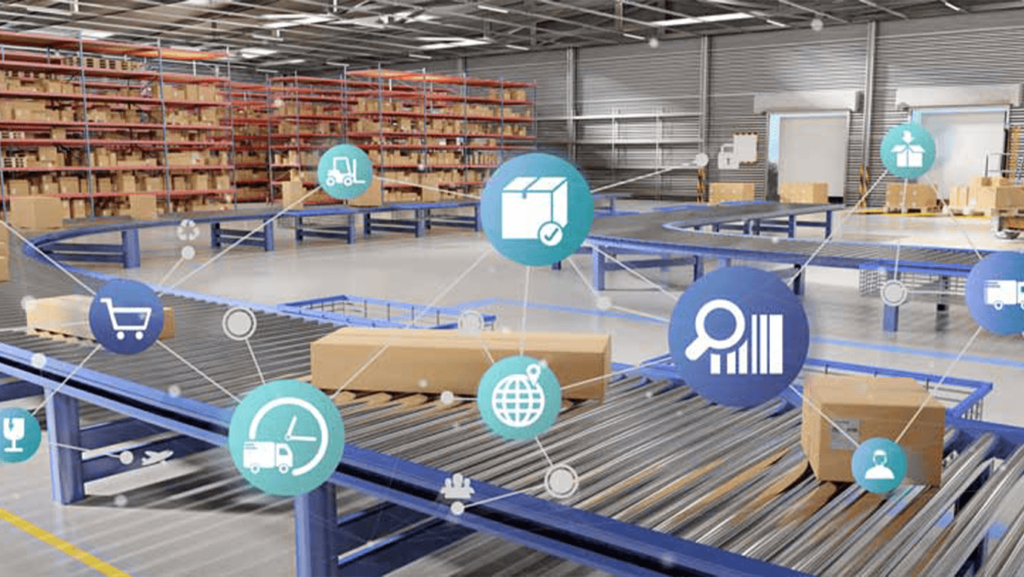
A lack of visibility in supply chain isn’t a new problem – it’s one that’s been around for years. So why hasn’t it been solved before now, how does digitisation help and what makes DigiHaul’s solution different? We asked DigiHaul’s Head of Sales, Matt Garland, about his experience in introducing digital solutions to the freight industry.
Do we really need visibility in supply chain?
Having visibility of shipments saves both carriers a huge amount of time and money and gives shippers – and their customers – peace of mind. With instant access to the whereabouts of a shipment at any given time, it eliminates the need for ringing around and chasing orders and makes supply chain processes much more efficient. Reducing admin time opens up huge opportunities for businesses to grow by freeing those people’s time to perform higher value tasks, other than phoning round chasing everything.
If this isn’t a new problem, why hasn’t there been full visibility for both shippers and carriers before?
Most supply chain directors nominate lack of visibility as one of their biggest challenges and the disparity of information between multiple hauliers. The reason that there’s never been full visibility in supply chain is because the logistics industry has such a wide range of subcontractors – from huge UK-wide hauliers with their own systems in place to single drivers who might only have a phone. It’s very hard to implement a solution that is easy to use and suits so many different types of haulier businesses.
Huge strides have been made with tracking technology, but this has generally been focused on people’s own fleets. A visibility gap is therefore created as soon as they need to flex resource during peaks and access the sub-contraction market.
It’s also hard to explain the benefits of digitisation to carriers when they’ve been running their business the same way for years – it’s a big change for them so they need to see what’s in it for them in order for them to buy into the technology.
What was your first experience of bringing digitisation to carriers?
In the early 2010s I worked for a B2B tech company that specialised in automating order management processes. Instead of making carriers change their processes rapidly we recognised that the one piece of technology that all drivers had was a mobile phone, so we introduced an Interactive Voice Response (IVR) system in different languages. Drivers were used to making phone calls as part of their work and this allowed us to capture the fundamental data we needed, i.e. has the driver set off, has he arrived at the destination and has the delivery been completed. It would automatically divert the driver to a customer service centre if there was a problem, so we were managing by exception.
I’ve been at the coalface and run a depot, carriers haven’t got time to train a new agency driver for 30 minutes on how to use your system. Instead of the driver having to drive the process, the application or process should drive the driver.
The pallet networks have a similar issue – when I worked in the sector there was a lot of time spent phoning around to track deliveries, often several phone calls were needed to get a status update on a shipment. Automating processes saved a huge amount of time and money and provided valuable data about the whereabouts of shipments.
DigiHaul’s carrier portal and driver app solves the same problem but using a much more integrated solution for the entire journey of the shipment.
What are the common challenges and that you’re seeing amongst hauliers now?
The hauliers I have in my network all have their own unique challenges but they are all suffering to some degree with the driver shortage. Two problems that aren’t widely publicised are firstly final-mile deliveries: the increase in B2C deliveries puts greater demands on the drivers in the pallet network who understandably prefer to do more straightforward single-drop B2B deliveries. Secondly, hauliers who operate in Europe are having to deal with the extra customs paperwork so consequently many of them are doing less of this work to avoid it.
On the positive side, hauliers are making better margins and starting to get the recognition they deserve with the vital role they play in our everyday lives.
DigiHaul has signed up around 500 carrier partners so far, what does being a partner with a digital freight business mean for them?
Digitisation is a must have now, not a nice to have, which gives our business a real purpose. DigiHaul has the volume as DHL’s preferred subcontractor, which you need to make the most of the technology.
The forward-thinking carriers who have already signed up know that we’re looking for opportunity out of adversity in the current market – although there’s a capacity shortage, there are still 20% of trucks running empty and trucks waiting at distribution centres for several hours so there’s real opportunity for them to grow their business.
Smaller carriers in particular can see that if they join now, they can rapidly grow their fleet from 10 to 20 to 30 vehicles and open up new, secure, long-term opportunities with some of our big contracts that they wouldn’t otherwise have access to.
What’s next for carriers who are partnered with DigiHaul?
Now that we’ve got the volume of carrier partners on board we’re ready to move on to the next exciting phase and can start to leverage the buying power we have as a group. We’re really keen to show carriers the benefits of being part of that, such as access to cheaper fuel and one-day payment terms.
